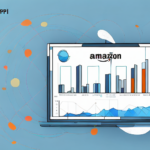Measuring Customer Profitability Score: How It Matters for E-Commerce Operations
Customer Profitability Score (CPS) is a crucial metric for e-commerce businesses, enabling them to assess the profitability of individual customers. By analyzing the costs associated with acquiring, serving, and retaining customers, businesses can leverage CPS to pinpoint and target their most profitable segments. This article delves into the significance of CPS in e-commerce operations, how to calculate it, the influencing factors, and strategies to optimize profitability. Additionally, we explore case studies of successful e-commerce companies that have effectively utilized CPS, emerging trends in its measurement, and the challenges associated with its implementation.
The Importance of Customer Profitability Score in E-Commerce
Understanding CPS allows e-commerce businesses to identify their most profitable customers and strategically allocate marketing and operational resources. Focusing on high-value customers, rather than solely targeting new acquisitions or retaining low-value ones, can significantly enhance profitability and drive sustainable growth. According to a McKinsey report, improving customer retention rates by just 5% can increase profits by 25% to 95%.
Additionally, CPS helps businesses evaluate the effectiveness of their marketing and operational expenditures. By comprehensively understanding the costs involved in acquiring and servicing each customer, companies can make informed decisions about budget allocation for acquisition and retention efforts.
Moreover, measuring CPS can uncover opportunities to enhance the customer experience. By analyzing the behaviors and preferences of high-value customers, businesses can identify trends that inform strategies to increase customer satisfaction, loyalty, and retention.
Furthermore, CPS aids in recognizing potential risks and opportunities within the customer base. Assessing the profitability of different customer segments can highlight over-reliance on a small group of customers or reveal untapped revenue potential, allowing businesses to develop targeted strategies for long-term success.
Calculating Customer Profitability Score
Calculating CPS involves a straightforward formula:
CPS = Revenue from Customer - Cost of Acquisition - Cost of Serving
To accurately calculate CPS, businesses must have detailed insights into their acquisition costs, including expenses related to marketing, advertising, and other efforts to attract customers. Serving costs encompass operational expenses such as customer service, shipping, and handling.
Revenue from a customer should account for all expenditures by the customer, including repeat purchases and referrals. Additionally, considering the customer’s Lifetime Value (CLV) is essential. CLV measures the total expected revenue from a customer over the duration of their relationship with the business, providing a comprehensive view of long-term profitability.
Steps to Calculate CPS
- Gather data on the total revenue generated by each customer.
- Determine the total cost of acquiring each customer, including marketing and advertising expenses.
- Calculate the total cost of serving each customer, covering customer service, shipping, and handling.
- Apply the CPS formula to determine the profitability of each customer.
- Analyze the results to identify high-value customers and adjust strategies accordingly.
It is essential to regularly update CPS calculations as business dynamics evolve with new customer acquisitions and fluctuating costs.
Factors Influencing Customer Profitability Score
Several elements can impact a customer’s profitability score, including:
- Acquisition Costs: Higher marketing and advertising expenses can reduce CPS.
- Serving Costs: Expenses related to customer support, shipping, and handling directly affect profitability.
- Customer Revenue: Higher spending, repeat purchases, and referrals contribute positively to CPS.
- Purchase Frequency: Customers who buy more frequently generate more revenue over time.
- Customer Satisfaction: Satisfied customers are more likely to be loyal and provide repeat business.
- Seasonality: Demand fluctuations during certain periods can influence profitability.
- Inventory Management: Efficient inventory management can lower serving costs.
- Pricing Strategy: Competitive and optimized pricing can enhance revenue without increasing costs.
Moreover, customer satisfaction plays a pivotal role. Highly satisfied customers not only tend to spend more but also act as brand advocates, further enhancing CPS through word-of-mouth referrals.
Leveraging CPS to Enhance E-Commerce Success
Businesses can utilize CPS to inform various strategic decisions:
Targeted Marketing Campaigns
By identifying high-value customers, businesses can tailor marketing efforts to focus on segments that offer the greatest return on investment. This approach ensures that marketing budgets are utilized efficiently, targeting customers who are more likely to convert and generate higher revenues.
Personalized Customer Experiences
Personalizing the shopping experience based on customer data can significantly improve customer satisfaction and increase CPS. Personalized recommendations, customized promotions, and tailored communication can enhance the overall customer experience.
Optimizing Resource Allocation
Understanding which customer segments are most profitable allows businesses to allocate resources more effectively. This includes directing more resources towards retaining high-value customers and reducing expenditure on less profitable segments.
Developing Loyalty Programs
Loyalty programs can incentivize repeat purchases and increase the CLV of customers, thereby enhancing CPS. Offering rewards, discounts, or exclusive benefits can encourage customers to continue engaging with the business.
Improving Customer Service
Enhancing customer service can lead to higher satisfaction and retention rates. Efficient and responsive customer support reduces serving costs and increases revenue through repeat business.
Case Studies: Successful E-Commerce Companies Using CPS
Numerous e-commerce companies have effectively implemented CPS to drive profitability:
Amazon
Amazon leverages CPS by analyzing customer purchasing behaviors to deliver personalized recommendations and targeted promotions, enhancing both customer satisfaction and revenue.
Zappos
Zappos prioritizes exceptional customer service to retain high-value customers, supplemented by a robust loyalty program that encourages repeat purchases and fosters brand loyalty.
Wayfair
Wayfair utilizes CPS to identify customers with high purchasing potential, offering them personalized discounts and promotions, which has led to increased sales and customer loyalty.
Sephora
Sephora segments its customer base based on CPS, allowing it to tailor marketing efforts and enhance conversion rates, ultimately boosting customer lifetime value.
Emerging Trends and Challenges in CPS Measurement
As e-commerce continues to evolve, several trends and challenges emerge in the measurement and optimization of CPS:
Artificial Intelligence and Machine Learning
Leveraging AI and machine learning can enhance the analysis of customer data, allowing businesses to predict customer behavior and optimize marketing strategies more effectively.
Predictive Analytics
Predictive analytics enables businesses to forecast future customer actions, facilitating proactive marketing campaigns aimed at retention and upselling opportunities.
Personalized Pricing Strategies
Implementing personalized pricing based on customer behavior and preferences can increase sales and customer loyalty, contributing to higher CPS.
Customer Experience Technologies
Advancements in chatbots and virtual assistants improve the customer experience by providing instant support and personalized recommendations, enhancing satisfaction and retention rates.
Data Privacy and Accuracy
Ensuring data privacy and maintaining accurate customer data are critical challenges in calculating CPS. Businesses must navigate data protection regulations while obtaining the necessary insights for CPS calculation.
Key Metrics to Monitor Alongside Customer Profitability Score
While CPS is a vital metric for assessing profitability, it should be evaluated alongside other key performance indicators to provide a comprehensive view:
- Customer Acquisition Cost (CAC): The total cost of acquiring a new customer, including marketing and sales expenses.
- Customer Retention Rate (CRR): The percentage of customers who continue to do business with a company over a specific period.
- Net Promoter Score (NPS): A metric that gauges customer loyalty and the likelihood of customers recommending the business to others.
- Customer Lifetime Value (CLV): The total revenue a business can expect from a customer over the duration of their relationship.
- Churn Rate: The rate at which customers stop doing business with a company.
Monitoring these metrics in conjunction with CPS enables businesses to identify areas for improvement, optimize marketing strategies, and enhance overall profitability.
Challenges and Limitations of Measuring Customer Profitability Score
While CPS offers valuable insights, several challenges and limitations must be considered:
Data Accuracy and Availability
Accurate calculation of CPS requires comprehensive and precise data on customer revenues and associated costs. Incomplete or inaccurate data can lead to misleading CPS results.
Intangible Benefits
CPS may not fully account for intangible benefits such as brand loyalty, customer advocacy, or the long-term value of customer relationships, potentially overlooking the true value of certain customers.
Dynamic Customer Behavior
Customer behavior can fluctuate over time, influenced by market trends, economic conditions, and individual preferences, making it challenging to maintain accurate CPS calculations.
Resource Intensive
Implementing CPS measurement requires significant resources in terms of data collection, analysis, and continuous monitoring, which may be a barrier for smaller businesses.
Despite these challenges, CPS remains an essential metric for e-commerce businesses aiming to enhance profitability and drive sustainable growth. By addressing the limitations and continuously refining the CPS calculation process, businesses can leverage this metric to make informed strategic decisions.
Measuring CPS is vital for e-commerce businesses to stay competitive and profitable. By understanding the factors influencing CPS, monitoring key metrics, and focusing on high-value customers, businesses can improve their profitability and growth. As technology advances, e-commerce companies have more tools at their disposal to measure and optimize customer profitability effectively.




















